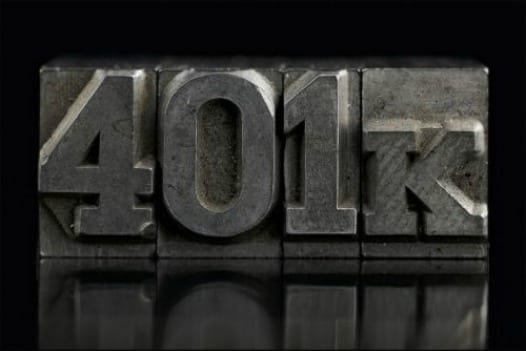American Workers Draining Their 401(k)s Should Rethink Retirement Accounts
More than 30 years ago, Congress created 401(k) plans as a way for employers to encourage their workforce to save for retirement.
Since then, 401(k) and other employer-funded, defined contribution (DC) programs, as well as individual retirement accounts (IRAs), largely replaced traditional pensions as the primary ways workers supplement Social Security checks upon retiring.
By 1980, in fact, 80 percent of private-sector workers were covered by traditional pension plans that paid a fixed benefit at retirement, based on salary and length of service.
Now only 20 percent are covered.
Conversely, by 2010 about one-third of American households included at least one worker participating in a 401(k)-type program. Employees contribute $175 million each year to these DC accounts, and employers give another $118 billion. The total assets in these plans are about $4.5 trillion.
Here’s the thing. Retirement accounts are not supposed to be short-term investments or used as rainy day funds. Yet workers caught between rising costs and non-rising wages as well as those who lost homes and jobs because of the Great Recession appear to be doing just that.
Several recent studies suggest that a increasing number of Americans are “breaching” their 401(k) accounts at an alarming rate: more than 25 percent of all DC participants are pulling out more than $70 billion a year.
The overwhelming majority of these people are using the withdrawn money to pay bills and for general expenses. The greatest number of “breachers,” not surprisingly, come from households earning less than $50,000 a year and from workers in their 40s who are wrestling with mortgages that are too expensive, credit card debt and children entering college.
How to Take Money from a 401(k)
In general, there are three ways in which an individual can take money from a 401(k):
- Loans
- Withdrawals
- Cash-outs
Depending on the plan, employers can give participants the ability to borrow from a 401(k) up to 50 percent of their vested balance or $50,000, whichever amount is lower.
Borrowers generally must repay the loans, with interest, within five years. Most plans require that the loan be paid back within 60 days if a worker leaves the company. Today, about 13.7 percent of participants have an outstanding loan against their 401(k).
When money is withdrawn from a 401(k) account by an owner younger than 59 ½, a 10-percent income tax penalty is placed on the amount taken out. (The owner also must pay a capital gains tax on any earned income from the account’s investments.)
» More about: How 401(k) Plans Are Taxed
Studies show that nearly 7 percent of those with a 401(k) take a withdrawal every year under “hardship” conditions — for things like unexpected medical costs, house payments to prevent foreclosure or educational expenses. (Certain hardship withdrawals, like those for certain medical bills, or when a reservist is called to active duty, may have the 10-percent penalty waived.)
Plan owners also can cash out their accounts in part or entirely when they leave their jobs. In fact, cash-outs make up the largest share of 401(k) breaches.
In 2010, 42 percent of workers cashed out their plans instead of rolling them into other tax-sheltered retirement plans when they changed jobs. In fact, 73 percent of cash-outs are used to pay bills and take care of everyday living expenses, with only a small percentage of them being used for non-essential or otherwise “frivolous” reasons like an expensive vacation or discretionary consumer purchase.
Some Workers Not Well Served by Current Plans
What to make of these trends?
First, they demonstrate that many people need to tap into their retirement savings more than we have realized — and these plans are being tapped long before they were intended to be.
Second, there is a strong association between poor household financial health and 401(k) breaching, with lower income people borrowing and withdrawing funds in greater numbers and in greater amounts than those who are better off.
Finally, they imply that for many people who are struggling in a depressed national economy, their retirement accounts are not serving their needs.
For example, their investments are most likely in long-term equities and bonds when they could be in short-term money market accounts that are more easily accessed and don’t incur penalties for withdrawal. These short-term accounts also aren’t burdened with mutual fund load fees, transaction fees, and investment management fees that drive up the costs of saving.
In short, in addition to the increasing disparity in America between the financial Haves and Have Nots, there is a growing disconnect between the future financial needs of workers (subsidized by their employers) and the current financial needs of a large segment of the U.S. workforce.
It may be time for employers, plan sponsors and workers to reconsider how best to utilize their retirement savings. Some employees might be better off storing their own money, as well as their employer contributions, in cash accounts so that they can use the money when the need it.
It would be nice if they could make it to retirement without having to declare bankruptcy before getting there.








